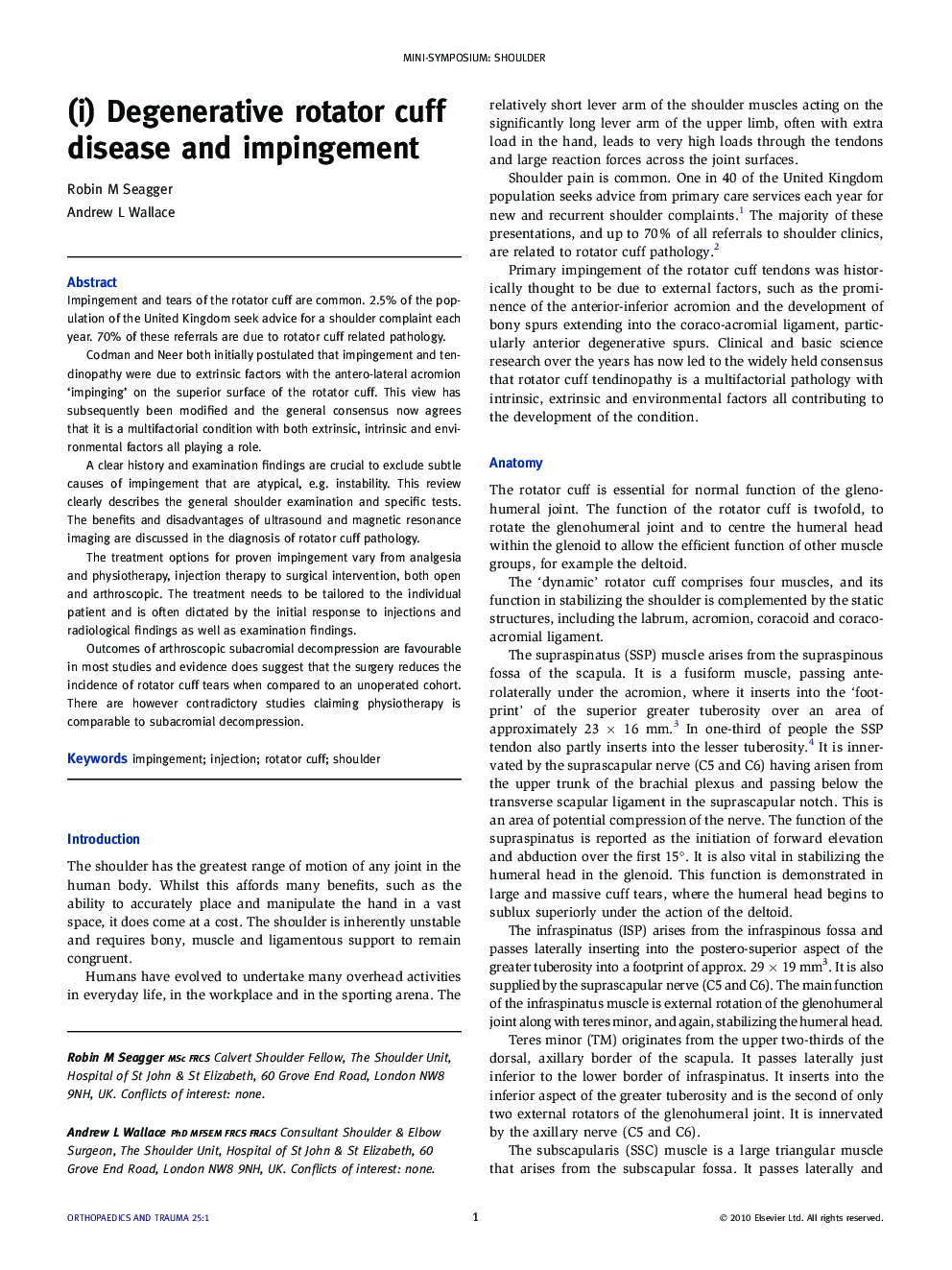| Article ID | Journal | Published Year | Pages | File Type |
|---|---|---|---|---|
| 4080349 | Orthopaedics and Trauma | 2011 | 10 Pages |
Impingement and tears of the rotator cuff are common. 2.5% of the population of the United Kingdom seek advice for a shoulder complaint each year. 70% of these referrals are due to rotator cuff related pathology.Codman and Neer both initially postulated that impingement and tendinopathy were due to extrinsic factors with the antero-lateral acromion ‘impinging’ on the superior surface of the rotator cuff. This view has subsequently been modified and the general consensus now agrees that it is a multifactorial condition with both extrinsic, intrinsic and environmental factors all playing a role.A clear history and examination findings are crucial to exclude subtle causes of impingement that are atypical, e.g. instability. This review clearly describes the general shoulder examination and specific tests. The benefits and disadvantages of ultrasound and magnetic resonance imaging are discussed in the diagnosis of rotator cuff pathology.The treatment options for proven impingement vary from analgesia and physiotherapy, injection therapy to surgical intervention, both open and arthroscopic. The treatment needs to be tailored to the individual patient and is often dictated by the initial response to injections and radiological findings as well as examination findings.Outcomes of arthroscopic subacromial decompression are favourable in most studies and evidence does suggest that the surgery reduces the incidence of rotator cuff tears when compared to an unoperated cohort. There are however contradictory studies claiming physiotherapy is comparable to subacromial decompression.
